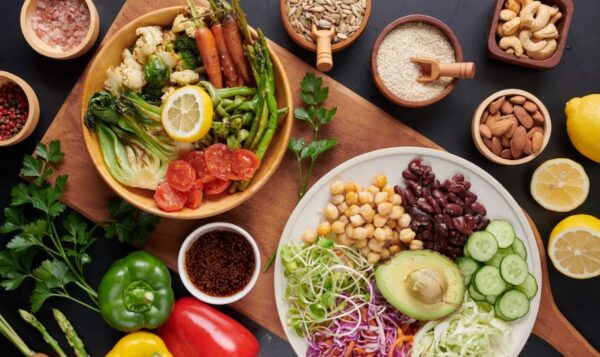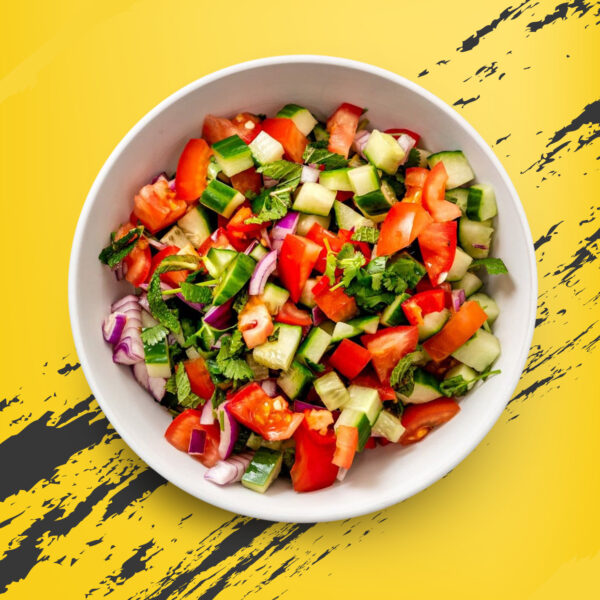When we prepare meals, flavor and appearance often take center stage. However, how food is cooked directly affects its nutritional value—especially the vitamins, minerals, and antioxidants that our bodies need. Some cooking methods can preserve nutrients, while others may cause significant losses. In this detailed guide, we explain how each popular cooking technique influences nutrient retention, so you can make healthier choices in your kitchen.
What Is Nutrient Retention?
Nutrient retention refers to the amount of essential nutrients like vitamins (e.g., Vitamin C, B-complex), minerals (e.g., potassium, magnesium), antioxidants, and phytochemicals that remain in food after it is cooked. Every food contains different nutrients, and how it’s heated—temperature, duration, moisture—can increase or decrease its value.
Boiling: High Nutrient Loss, Especially Water-Soluble Vitamins
Boiling is one of the most common cooking methods used across the world. However, boiling leads to a high loss of nutrients, especially water-soluble vitamins like Vitamin C and B vitamins. These nutrients dissolve in water and are easily destroyed by heat.
Key Facts:
- Vitamin C can lose up to 50–70% during boiling.
- Folic acid and thiamine levels drop significantly.
- Minerals like potassium can leach into the water.
Tip: If you must boil vegetables, use the least amount of water possible and cook for the shortest time. Reusing the cooking water in soups or sauces can help recover lost nutrients.
Steaming: The Most Nutrient-Preserving Method
Steaming is widely regarded as one of the healthiest cooking methods. Since food doesn’t come into direct contact with water, steaming preserves water-soluble nutrients better than boiling or blanching.
Key Benefits:
- Preserves over 90% of vitamin C in vegetables like broccoli and spinach.
- Retains glucosinolates in cruciferous vegetables (important for cancer prevention).
- Maintains texture and flavor while minimizing nutrient breakdown.
Tip: Use a covered steamer basket and avoid overcooking. Steaming leafy greens for 2–4 minutes is usually enough.
Microwaving: Quick, Efficient, and Nutrient-Friendly
Microwaving has been unfairly criticized, but studies show it’s one of the best methods to retain nutrients, especially if done with minimal water and short cook times.
Nutritional Impact:
- Retains more vitamin C than boiling or frying.
- Preserves antioxidants in vegetables like carrots and tomatoes.
- Fast cooking times reduce the breakdown of sensitive nutrients.
Tip: Use microwave-safe containers with a lid to trap steam. Avoid overcooking or adding too much water.
Grilling and Broiling: Nutrient Loss with Flavor Boost
Grilling and broiling add a delicious charred flavor to meats and vegetables, but high temperatures can reduce certain nutrients. Fat-soluble vitamins like A and E may degrade, and long cook times can lead to oxidation of fats.
What to Watch Out For:
- Cooking at very high temperatures can form harmful compounds like heterocyclic amines (HCAs) and polycyclic aromatic hydrocarbons (PAHs), especially in meat.
- Some loss of B vitamins due to drip loss (juices escaping from meat).
Tip: Marinate meat in herbs like rosemary or thyme to reduce HCA formation. Grill vegetables on skewers for less nutrient loss.
Sautéing and Stir-Frying: Quick and Nutrient-Smart (With the Right Oil)
These high-heat methods are excellent for quick cooking, which minimizes nutrient loss, especially in vegetables. Since sautéing uses small amounts of oil, it also helps with the absorption of fat-soluble vitamins like A, D, E, and K.
Nutrient Details:
- Retains antioxidants and flavonoids in bell peppers and onions.
- Preserves chlorophyll and carotenoids in greens.
- The right oil (like olive oil) boosts polyphenol content.
Tip: Avoid overcooking. Stir-frying vegetables for 3–5 minutes is often enough to keep nutrients intact and textures crisp.
Roasting and Baking: Balanced Retention With Fluctuating Results
Roasting and baking involve cooking food in dry heat, usually at moderate to high temperatures. This technique can preserve or destroy nutrients, depending on time and temperature.
What You Gain or Lose:
- Vitamin loss (especially C and B) increases with longer cook times.
- Antioxidants like lycopene in tomatoes increase after roasting.
- Roasted sweet potatoes retain beta-carotene better than boiling.
Tip: Roast vegetables at around 180–200°C (356–392°F) and avoid burning. Use foil or parchment paper to protect delicate foods.
Deep Frying: Tasty but Often Nutrient-Depleting
Deep frying involves submerging food in hot oil, usually above 350°F (175°C). While it adds crispiness and flavor, it’s often at the cost of nutrient density.
Downsides of Deep Frying:
- Destroys heat-sensitive vitamins like Vitamin C.
- Causes oxidation of fats, reducing omega-3s in fish.
- Increases calories significantly due to oil absorption.
Tip: If you fry, use oils with high smoke points like avocado oil. Avoid reusing oil as it becomes oxidized and harmful.
Pressure Cooking: Retains Nutrients in Less Time
Pressure cooking uses steam under high pressure to cook food quickly. This shortens cook times and preserves many nutrients, especially in legumes and grains.
Why It Works:
- Retains more B vitamins in legumes compared to boiling.
- Ideal for cooking tough cuts of meat while preserving minerals.
- Perfect for reducing anti-nutrients like phytic acid in beans.
Tip: Don’t overcook. Use natural release to avoid excess pressure that breaks down nutrients.
Slow Cooking: Gentle Heat With Mixed Nutritional Outcomes
Slow cookers use low temperatures over long periods. This gentle method is excellent for tenderizing meats and developing flavor but may lead to some nutrient degradation, especially water-soluble vitamins.
How It Affects Nutrients:
- Long heat exposure may reduce Vitamin C by up to 50%.
- Retains most minerals like iron, magnesium, and potassium.
- Useful for releasing collagen from meat bones.
Tip: Add leafy greens or herbs toward the end of cooking to minimize nutrient loss.
Raw vs. Cooked: Which Is Better?
Raw foods retain all natural enzymes and heat-sensitive nutrients, especially vitamin C, folate, and some polyphenols. However, cooking can sometimes increase bioavailability of nutrients by breaking down cell walls.
Examples:
- Cooking tomatoes boosts lycopene absorption.
- Cooking carrots enhances beta-carotene uptake.
- Raw spinach provides more folate; cooked spinach delivers more iron.
Tip: A combination of raw and cooked foods offers the best of both worlds.
Tips for Maximizing Nutrient Retention
- Cook with skins on: Many nutrients reside in or just under the skin of fruits and vegetables.
- Cut right before cooking: Pre-cut produce loses nutrients faster through oxidation.
- Use minimal water: For boiling and steaming, this reduces leaching of vitamins and minerals.
- Don’t overcook: The longer the food is exposed to heat, the more nutrients it can lose.
- Reuse cooking water: In soups, stews, and gravies, to retain leached nutrients.
Cooking Method Comparison Chart
| Cooking Method | Nutrient Retention | Best For | Watch Out For |
|---|---|---|---|
| Boiling | Low | Root vegetables, soups | Vitamin C/B losses, leaching |
| Steaming | Very High | Leafy greens, broccoli | Overcooking |
| Microwaving | High | Vegetables, leftovers | Uneven heating |
| Grilling | Medium | Meats, skewers | Formation of HCAs/PAHs |
| Sautéing | High | Peppers, onions, greens | Too much oil |
| Roasting | Medium | Tomatoes, root vegetables | High temperatures |
| Deep Frying | Low | Potatoes, battered food | Caloric overload, nutrient breakdown |
| Pressure Cooking | High | Beans, lentils, meats | Overcooking |
| Slow Cooking | Medium | Meats, soups | Loss of water-soluble vitamins |
| Raw | Varies | Fruits, some greens | Low bioavailability of some nutrients |
Conclusion
Choosing the right cooking method is essential for preserving the nutritional quality of your meals. While no single technique is perfect, understanding the effects of heat, water, and cooking time can help you make smarter choices. By combining several methods—such as steaming vegetables, pressure-cooking legumes, and roasting antioxidant-rich foods—you can enjoy meals that are both delicious and nutrient-rich.
If you care about your health and want to get the most out of every ingredient, let your cooking method work with you—not against you.
Beehive Restaurant and Lounge is a vibrant culinary destination in Portland, Oregon, offering a unique blend of authentic African cuisine infused with the sweetness of honey. Whether you’re joining us for a meal or a special celebration, Beehive is your hive of warmth, hospitality, and exceptional culinary delights. Connect with us on social media and join our community to stay updated on our latest offerings and events!








